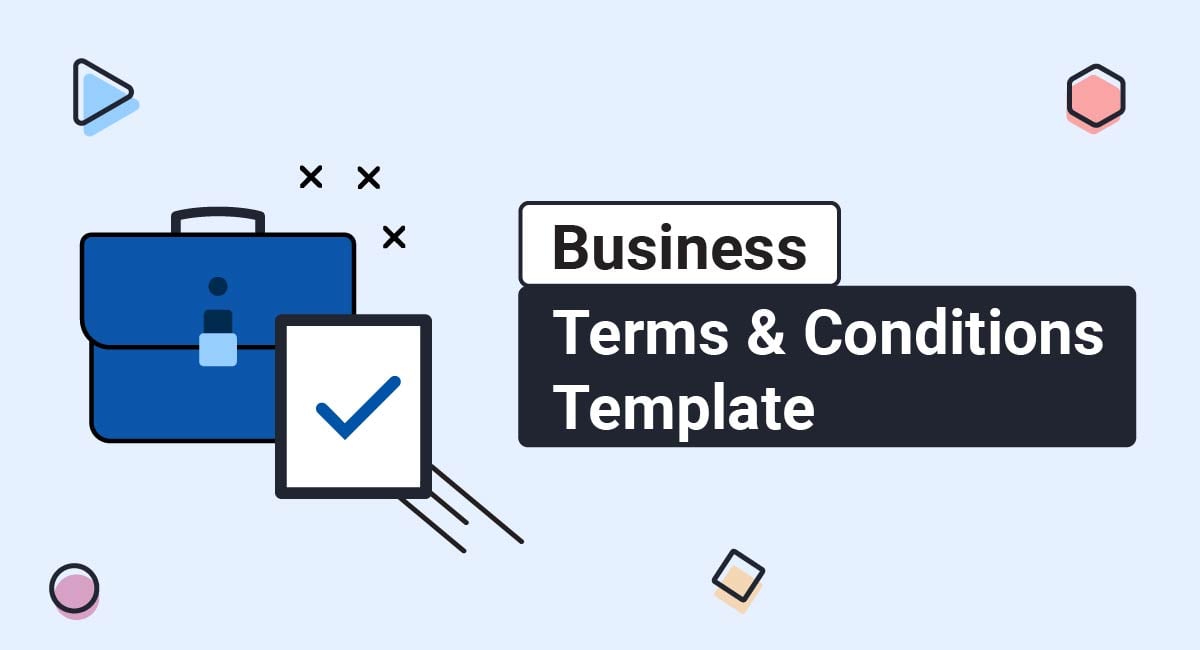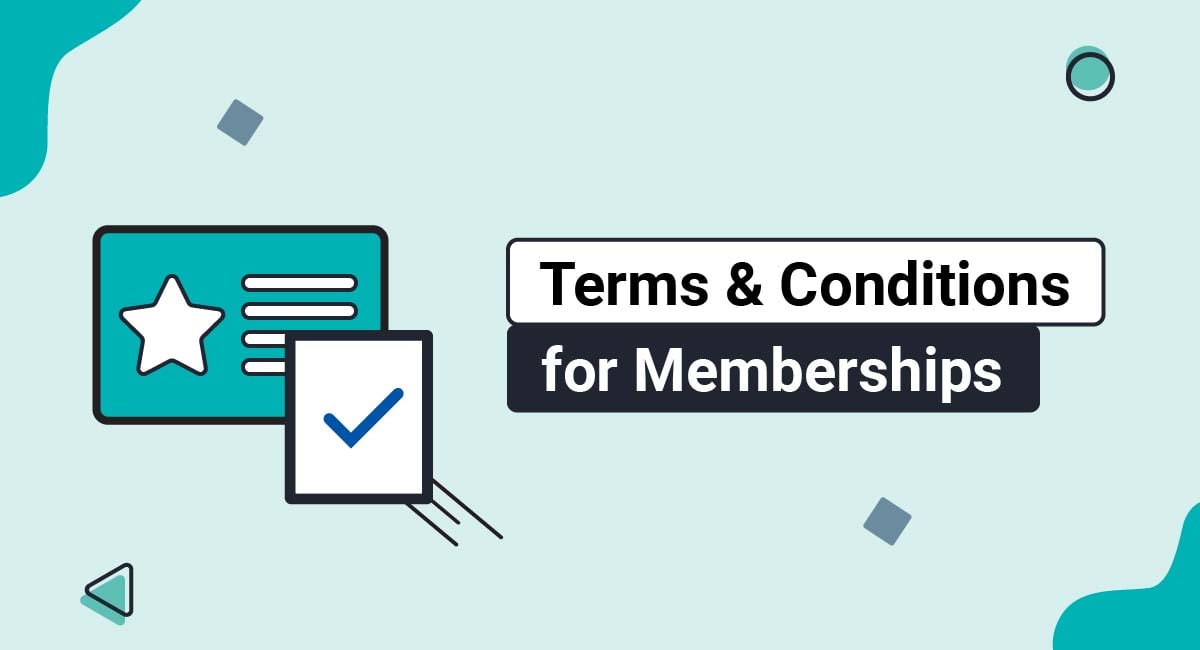If you run a subscription service, there are provisions in your Terms & Conditions agreement (T&C), also known as Terms of Use or Terms of Service, that must be emphasized. Otherwise, you will lack the enforcement abilities to secure payment and the appropriate use of your service.
This article will explain why you need a T&C for your subscription service, outline the clauses you should have in your agreement, and show you how to display and get agreement to your Terms.
Our Terms and Conditions Generator makes it easy to create a Terms and Conditions agreement for your business. Just follow these steps:
-
At Step 1, select the Website option or the App option or both.
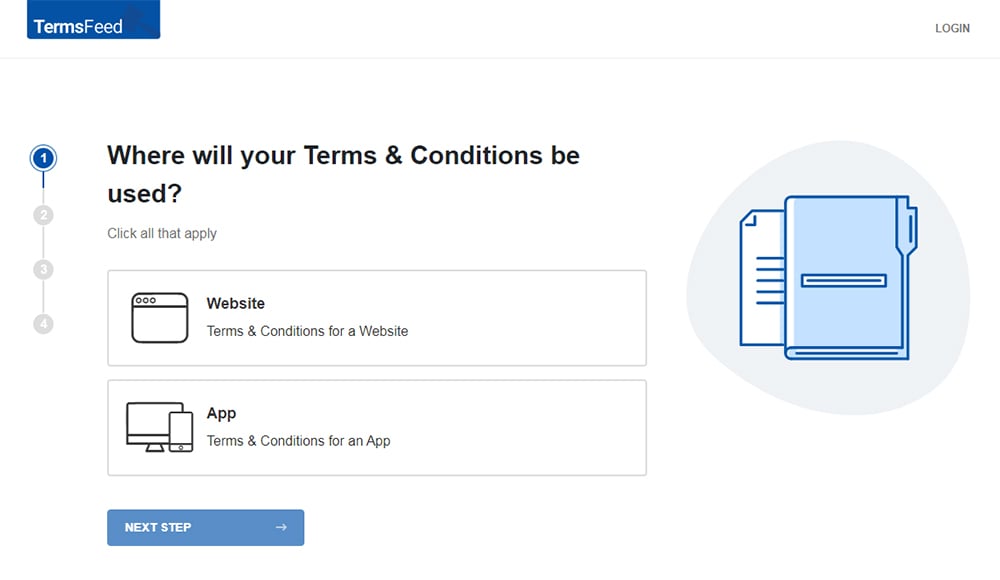
-
Answer some questions about your website or app.
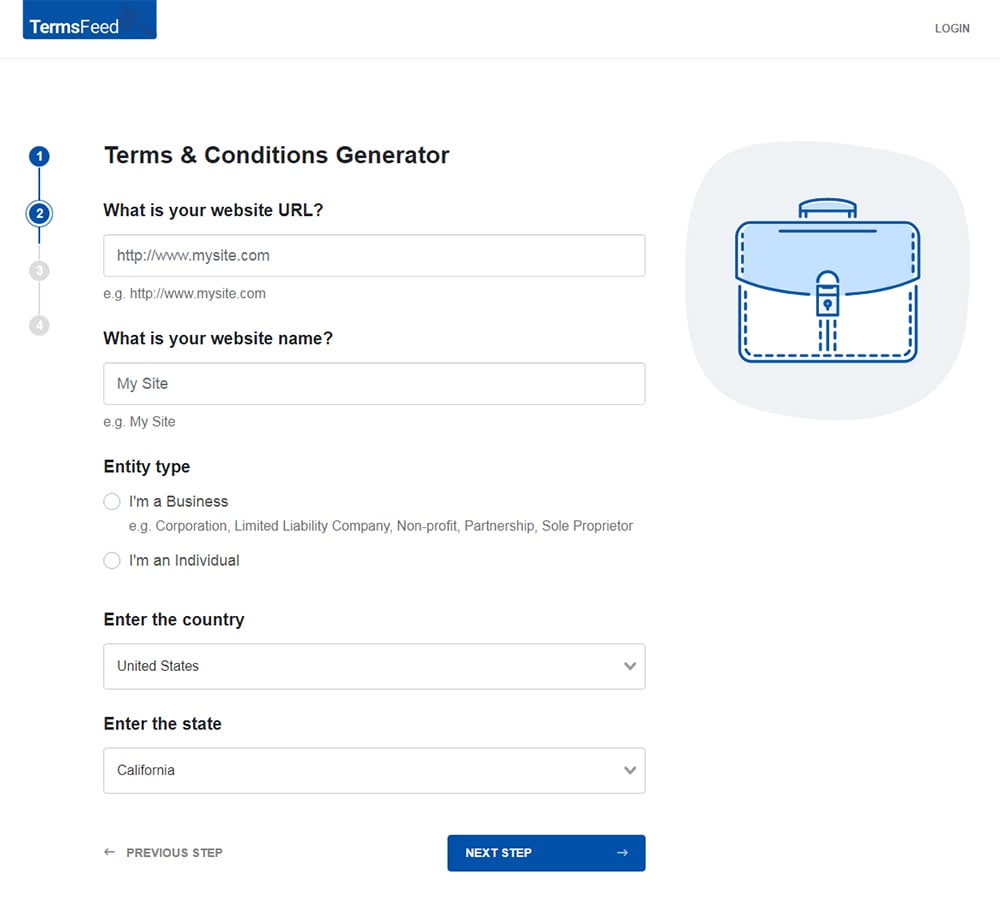
-
Answer some questions about your business.
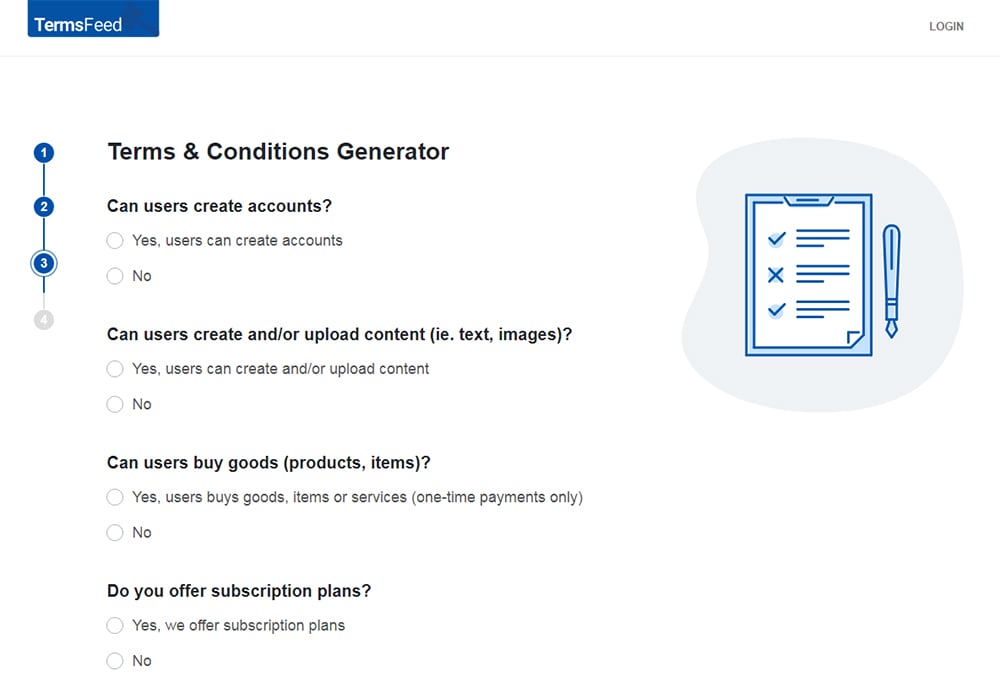
-
Enter the email address where you'd like the T&C delivered and click "Generate."
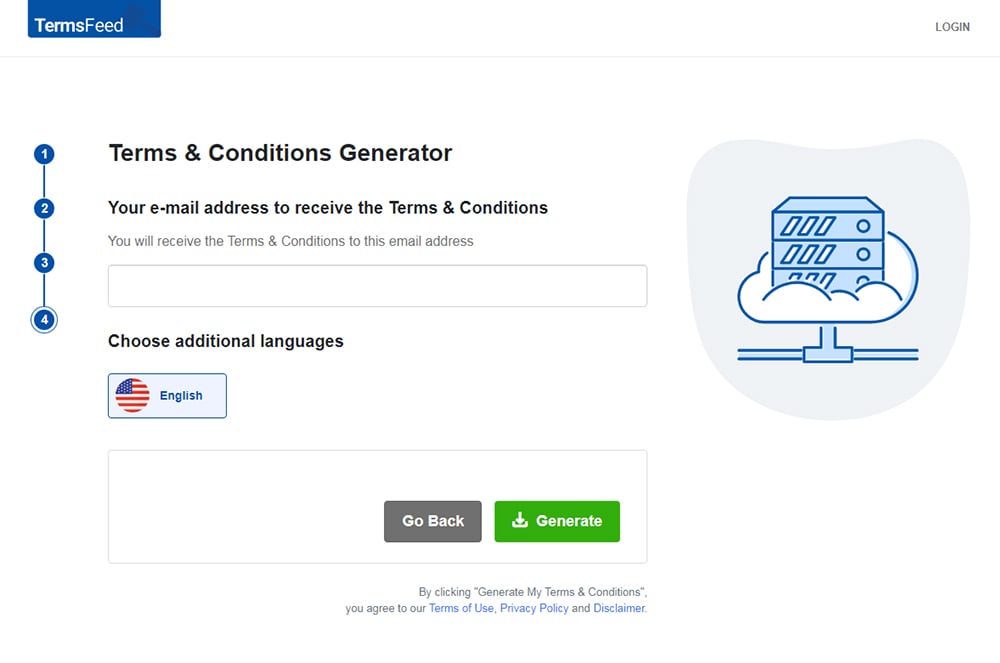
You'll be able to instantly access and download the Terms & Conditions agreement.
- 1. Why You Need Terms & Conditions for Subscription Services
- 2. What Clauses Should Your Terms & Conditions for Subscription Services Include?
- 2.1. Payment Terms
- 2.2. Non-Refundable Fees
- 2.3. Restrictions on Use
- 2.4. Returns and Refunds
- 2.5. Termination of Subscription
- 3. How to Make Your Terms & Conditions for Subscription Services Available to Users
- 4. How to Get Agreement to Your Terms & Conditions for Subscription Services
- 5. Summary
Why You Need Terms & Conditions for Subscription Services

A Terms and Conditions agreement contains rules for using your website or app. It's a legal agreement that helps you control user conduct, the use of your intellectual property, rights to terminate accounts, and liability and warranty limits.
Subscription plans are a popular online business model. Users can order monthly shipments of beauty products, clothing, craft projects, and even pet supplies to try new products at an affordable cost. Many users appreciate the variety and options offered by these services.
When it comes to subscription services, your Terms and Conditions agreement needs provisions that are specific to the nature of the subscription service. Some of the clauses in your subscription service T&C may be clauses that aren't as important for apps and websites that don't deal with subscriptions.
For example, since these services involve monthly or annual payments, you'll need to include terms for what will happen if a credit card or bank draft is declined, and how recurring charges will be processed.
Return information and intellectual property concerns are also paramount with subscriptions, especially if the service distribute products not yet released to the general market.
You need to preserve your rights, inform users of expectations, and preserve any relationships you have with vendors. That is why there are provisions that require more time and consideration than with other online services.
What Clauses Should Your Terms & Conditions for Subscription Services Include?
Your Terms and Conditions will contain many of the same provisions as agreements for non-subscription services. However, the unique nature of a subscription plan requires modification of some of the terms.
The following vital sections must be drafted correctly to preserve your business:
- Payment terms
- Non-refundable fees
- Restrictions on use
- Termination of subscriptions
Payment Terms
While it is likely that most users will review your monthly or annual fees carefully before signing up for your subscription, you still need to outline payment terms thoroughly in your T&C. This is especially important if you use automatic renewal and the user must actively take steps to stop the payments before a specific time to cancel their subscription.
One reason users like subscription plans is that they get to try new products without spending too much money. For a flat monthly fee, they receive a shipment and a new selection of goods on a schedule.
Ipsy, a beauty product subscription service, offers monthly and annual plans. It explains these options and goes into detail about renewal, including the day the renewal period is billed:
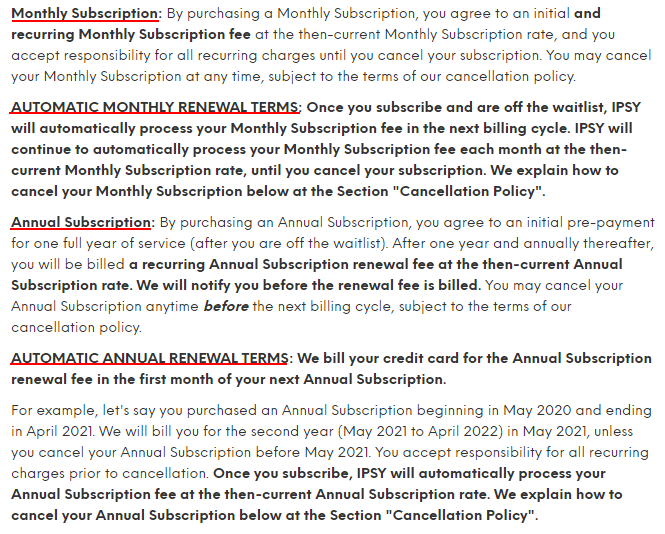
Payment terms also include enforcement measures. If an automatic payment is declined or returned, the likely result is no shipment to the user. When balances accrue, website owners may take collection action.
Not only do you want to describe how subscription payments are managed but also any remedies you will pursue if bills or balances are left unpaid. In most cases, a declined payment is a rare mistake but you want to be ready for users who attempt to keep goods without payment.
Non-Refundable Fees
Consumers can be touchy about fees they did not expect. If there are extra fees beyond the subscription price that you won't refund, describe them in their own section so that they're easily noticeable and difficult for users to overlook it.
Stitch Fix has an interesting approach to the subscription market. Users receive a box of clothing and decide what they wish to keep. The company then charges them for those items and accepts returns on the rest.
Part of this service includes a "Styling Fee" which is nonrefundable. This is addressed directly in the T&C:
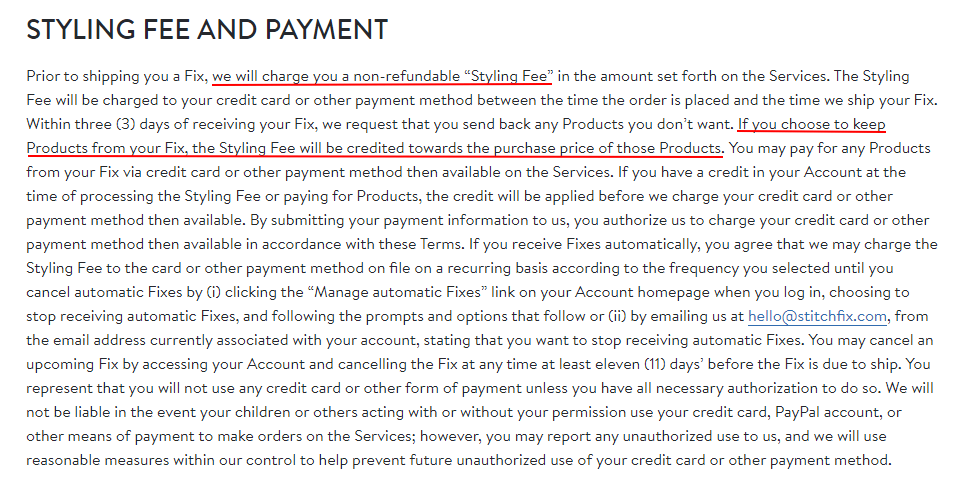
Any charges that may be unexpected or overlooked should be mentioned in a distinct clause and not buried with the rest of the payment terms. This prevents bad feelings among your users and makes it easier to enforce these types of provisions.
Restrictions on Use
Many subscriptions trade in proprietary goods that are not released to the general market. If this is the case with your service, it is a good idea to include provisions restricting use.
Kiwi Co. provides craft instructions and supplies each month to its clients. Many of its projects are distributed to test the children's craft market.
In its Restrictions on Use clause it prohibits renting, re-selling, sublicensing or reverse-engineering the products. This is to protect the proprietary nature of these products:
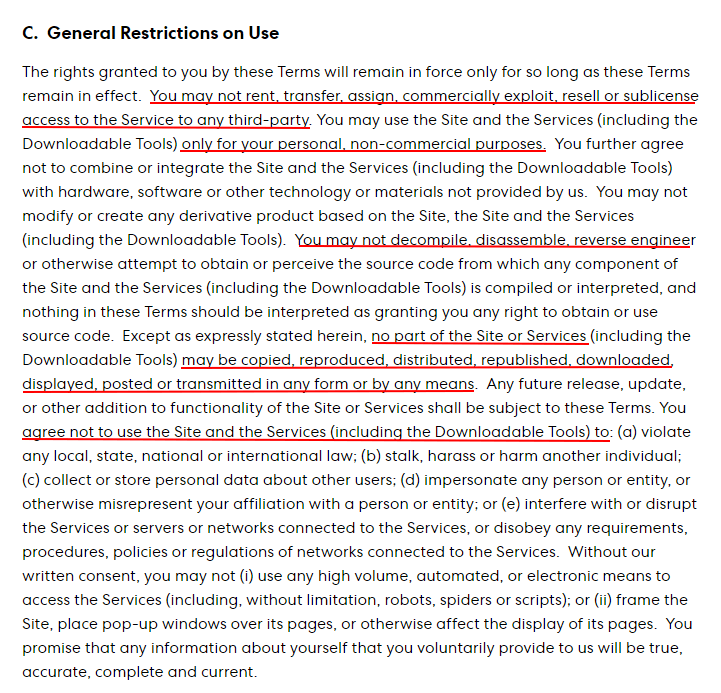
If you also offer proprietary and test goods, this is definitely not a section to skip. You may find replicas of a test product in the general market and will have no means of collecting damages against an offender. Prohibiting these practices directly in your T&C makes it easier to secure remedies against infringement.
Returns and Refunds
A Return and Refund Policy is usually located on a separate page as well as within the T&C. This is true with subscription services, too.
Use our Return & Refund Policy Generator to create a Return and Refund Policy for your business.
Including it in your T&C adds to your enforcement powers since users accept your terms when they sign up for your service. Locating it on a separate page helps users find this important information easily.
Here's how Stitch Fix links its Return and Refund Policy within its Terms of Use:

Kiwi Co. has a limited return policy in its T&C. Part of the subscription commitment is that users will try whatever products the company sends their way. In the rare instances where returns are authorized, users only receive store credit:

If you do not have a standalone Return Policy, this fact should go in your T&C.
It may feel like overkill to maintain both a return, refund, and exchange policy and place those same provisions in your T&C.
However, it is a sensible solution in case a user claims your policy is not enforceable. They cannot make that claim stand if you place it in your T&C. Having it as a separate policy helps with communication as well.
Since being clear with users will help more than hurt you, it's recommended to maintain your returns and refunds information in your T&C as well as in a separate policy.
Termination of Subscription
Users may want to terminate a subscription because they face reduced income or they no longer enjoy the products. If you make this impossible for them, it will appear fraudulent and your company will be subject to bad reviews. Use your Terms and Conditions agreement to let users know how a subscription can be terminated, and what will happen upon termination.
Ipsy explains the simple process of logging into an account and following the cancellation procedures:

Kiwi Co. has a detailed cancellation policy clause with detailed information relating to what effects canceling will have, and how to go about doing it:
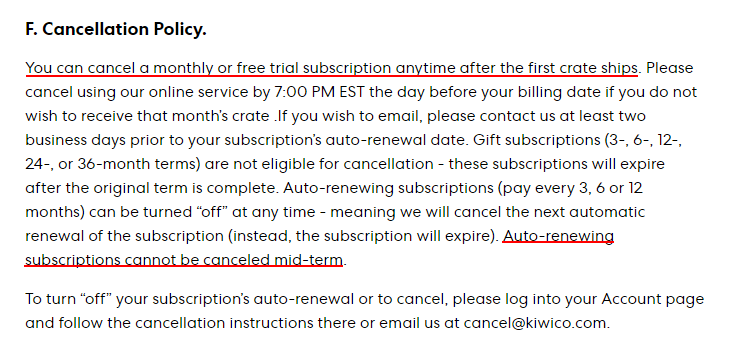
How to Make Your Terms & Conditions for Subscription Services Available to Users

Once you finish a T&C appropriate for your subscription service, it needs to be conspicuously displayed on your website, such as in the site footer. Users also need to accept the terms so you can enforce them, such as with an "I Agree" checkbox.
Start with making the T&C available through clickwrap when users register. With Ipsy, this occurs when users create a profile and start ordering their first shipment:
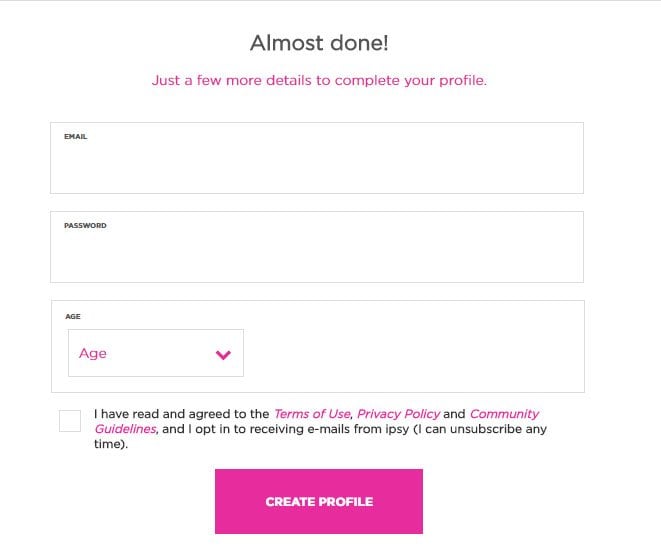
In addition to making the T&C available at sign-up, you need to provide a conspicuous link on your webpage. Traditionally, this is done in the footer, like with Gwynnie Bee here:
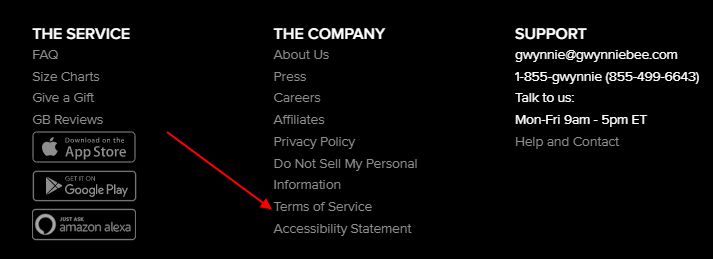
How to Get Agreement to Your Terms & Conditions for Subscription Services
To get agreement to your Terms and Conditions, use an "I Agree" checkbox like this one to get clear records of consent:

Summary
Consumers are adventurous when it comes to trying new products, which makes this a great time to run subscription services. While most of your users will be enthusiastic participants, there is always a chance of one who will attempt to receive items without paying for them or look for a chance to infringe on a new product.
Your T&C protects you from those possibilities and gives you the enforcement power to remove unsavory customers. Include these provisions in that agreement and you will enjoy a successful and profitable subscription service.
Include all relevant information in your Terms agreement, and make sure to display your Terms and Conditions agreement in a way that it's always easy to find and read when your users wish to.
Have users check a checkbox next to an "I Agree" statement or something similar to show that they do agree to be bound by your terms.

Comprehensive compliance starts with a Privacy Policy.
Comply with the law with our agreements, policies, and consent banners. Everything is included.



